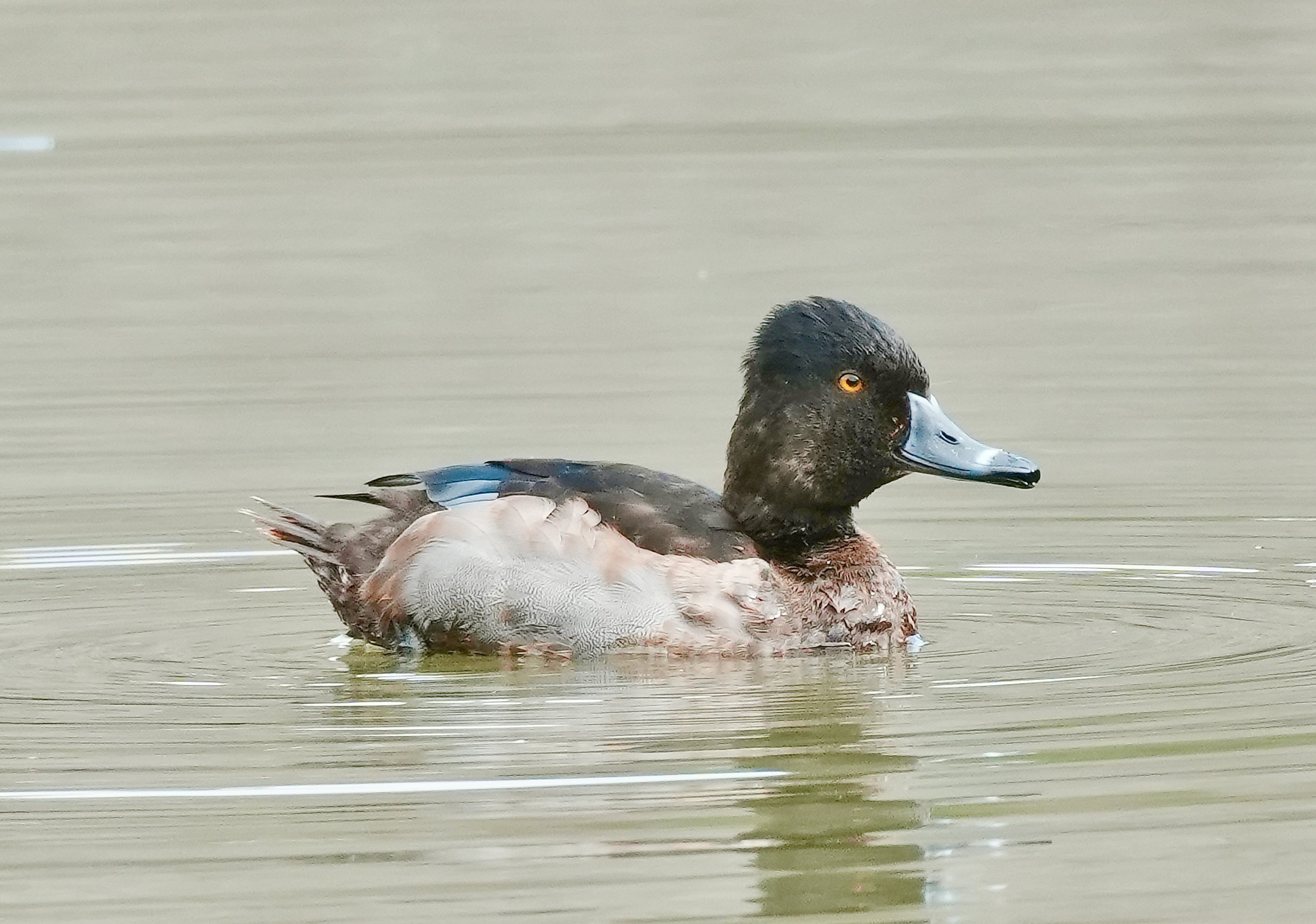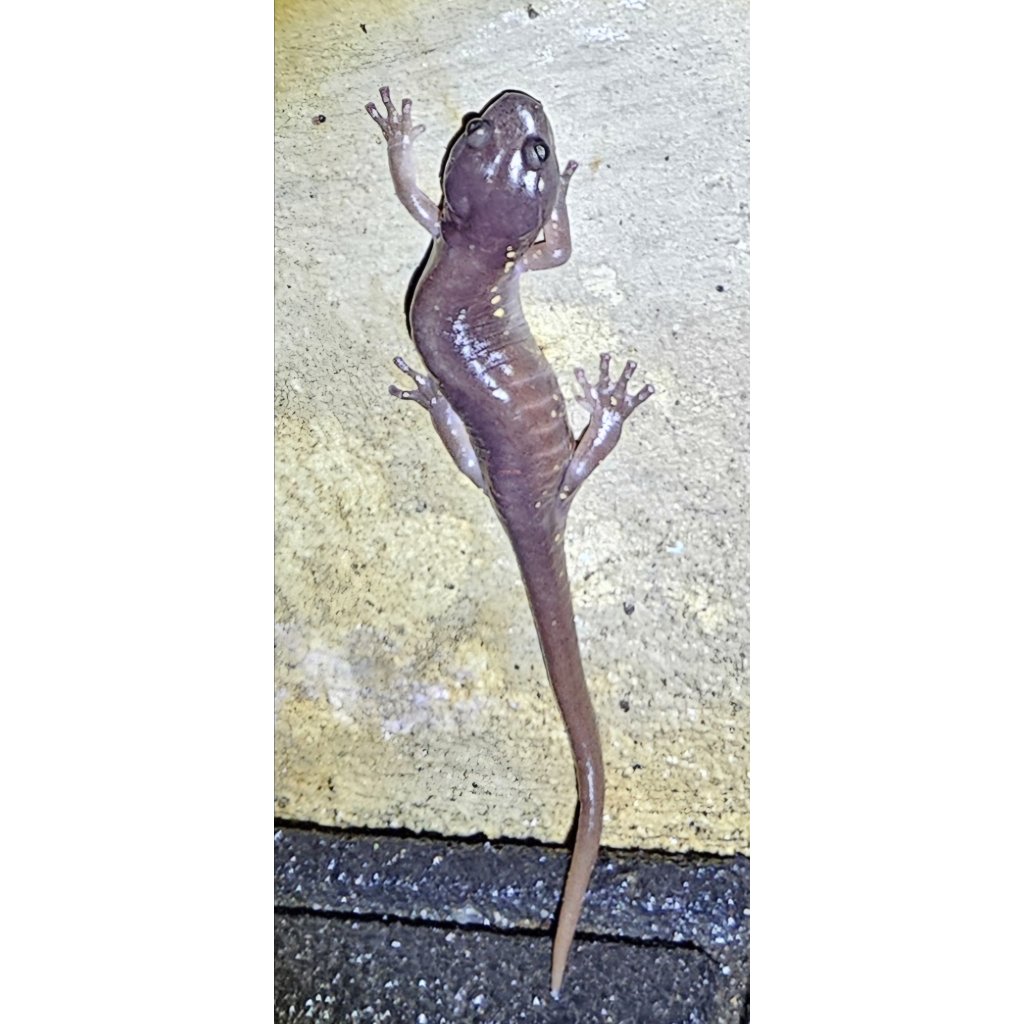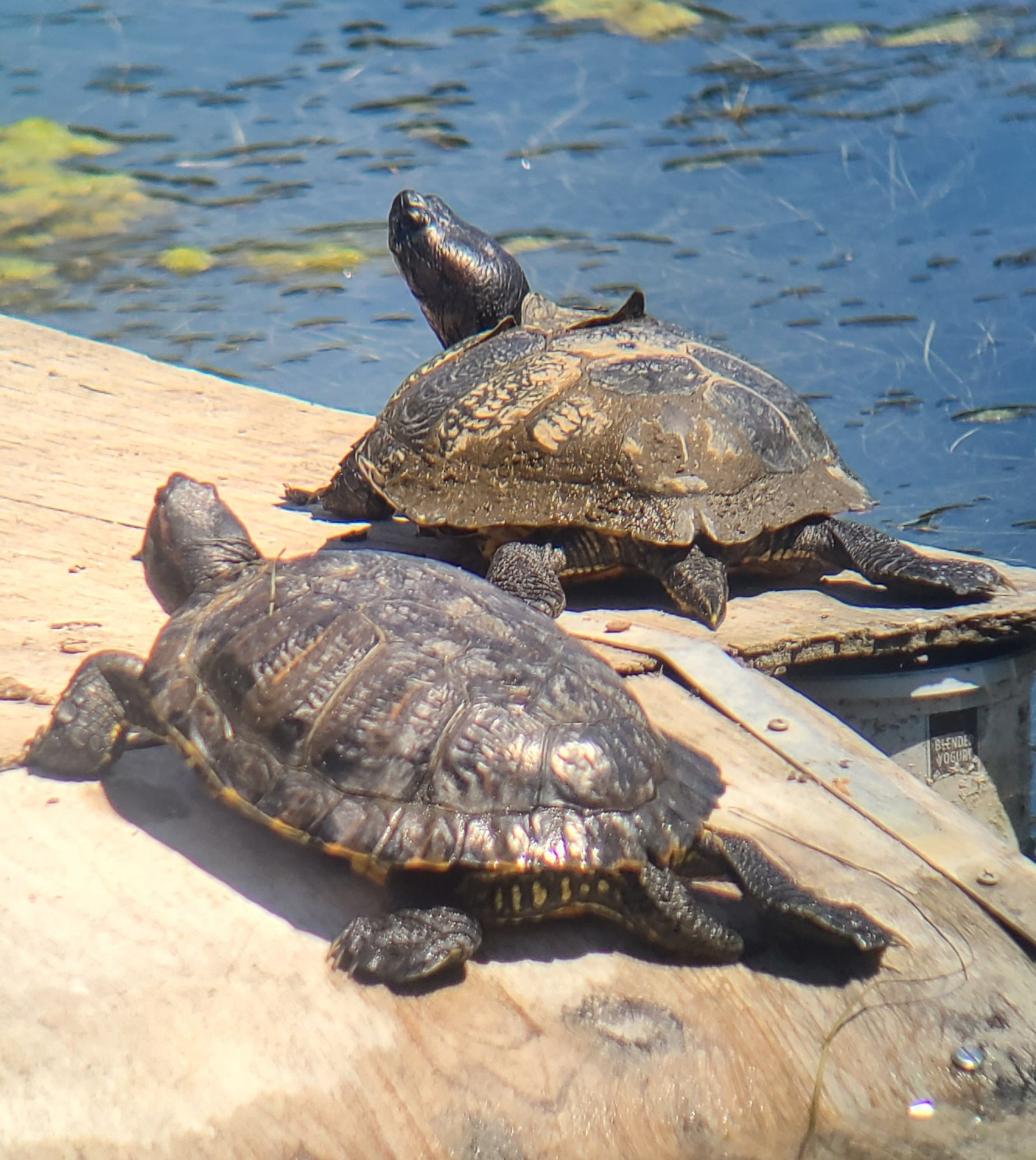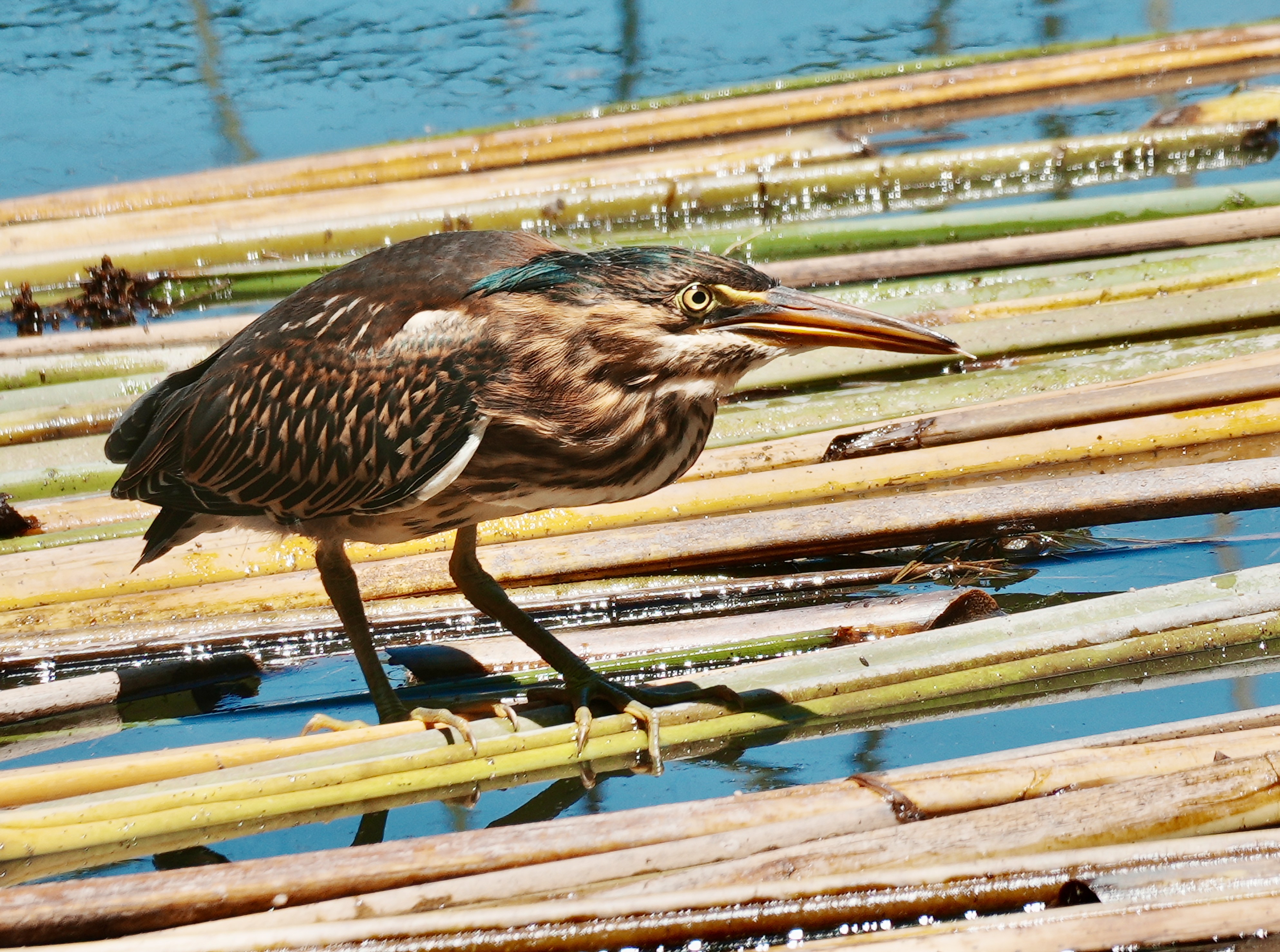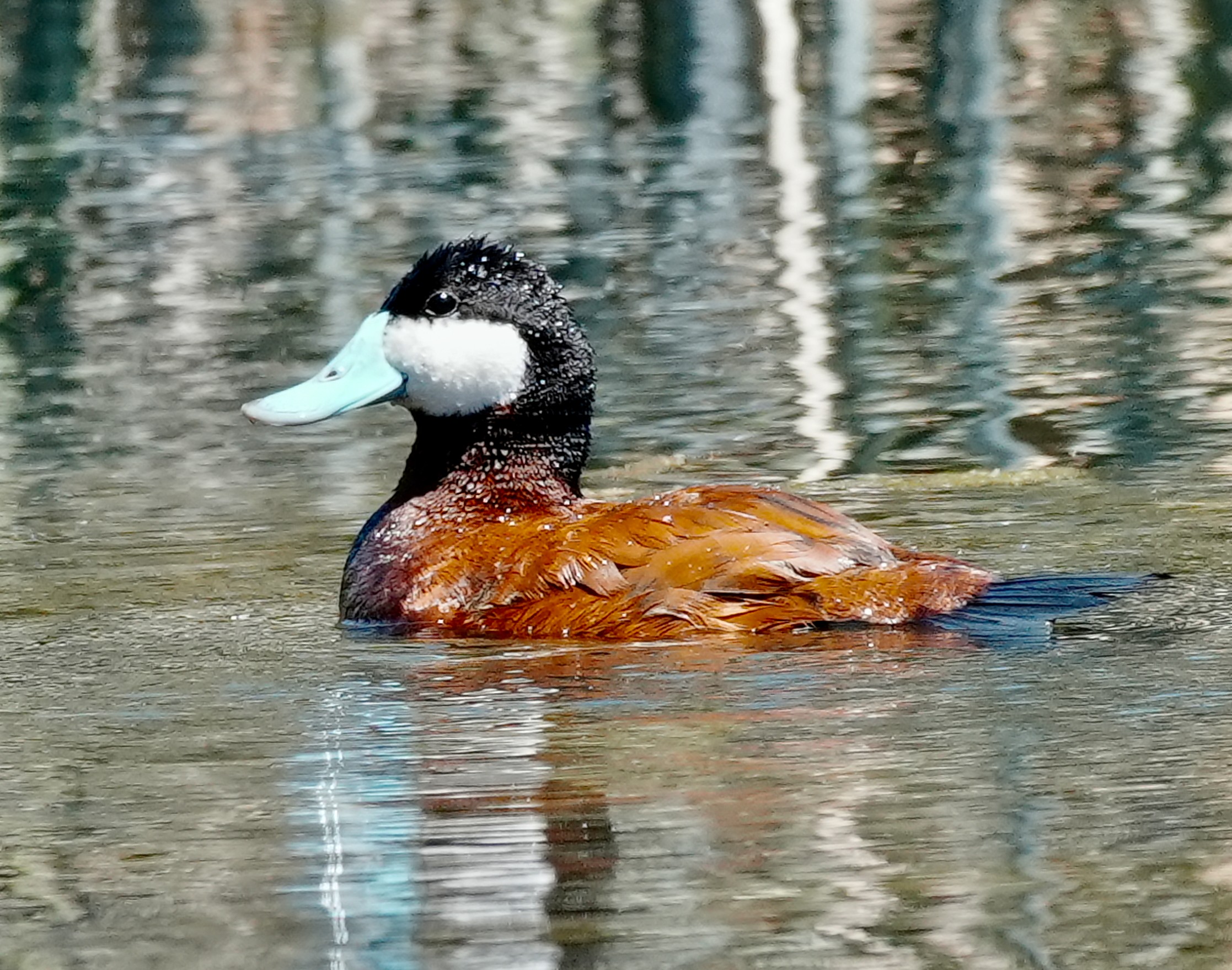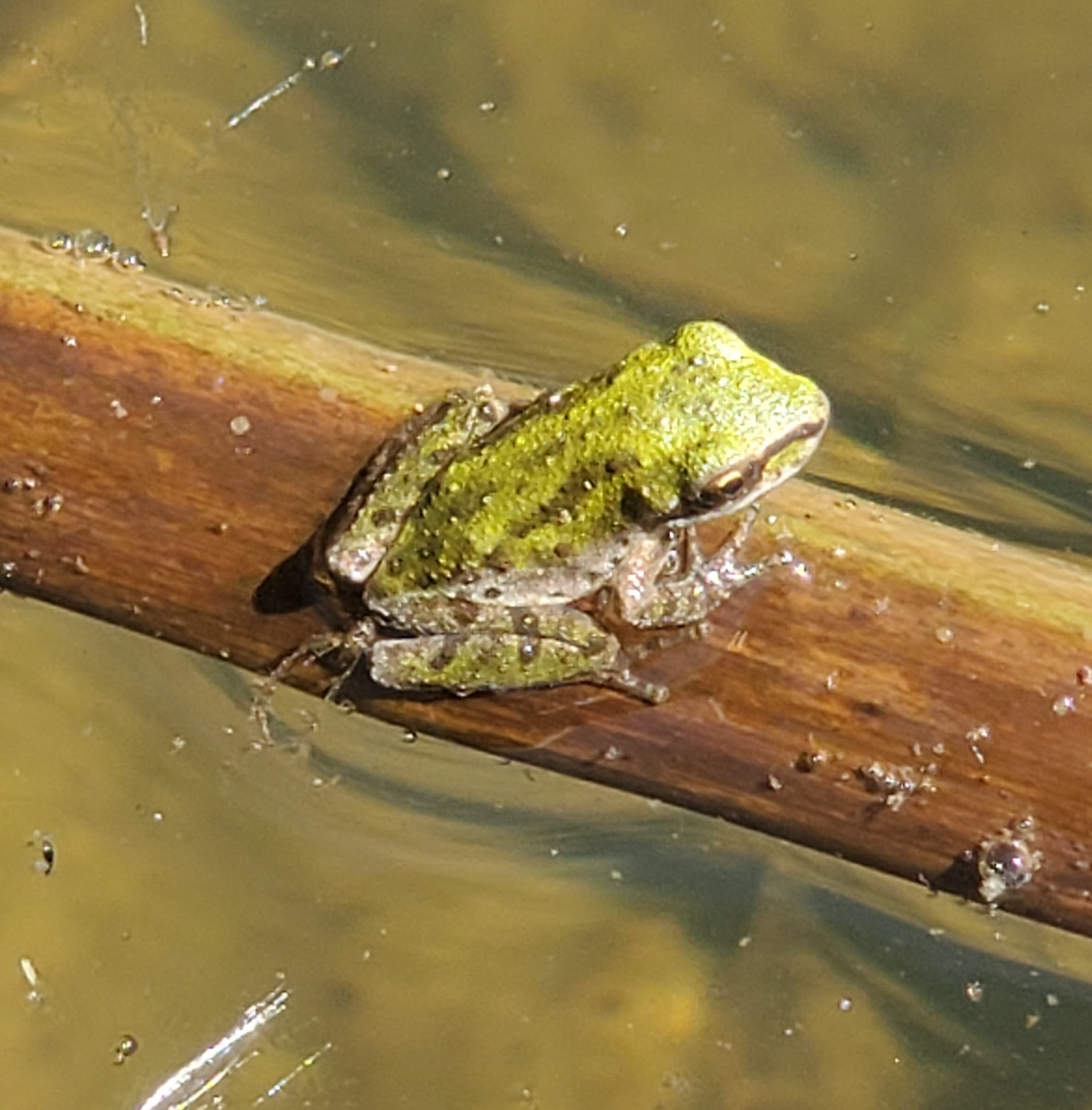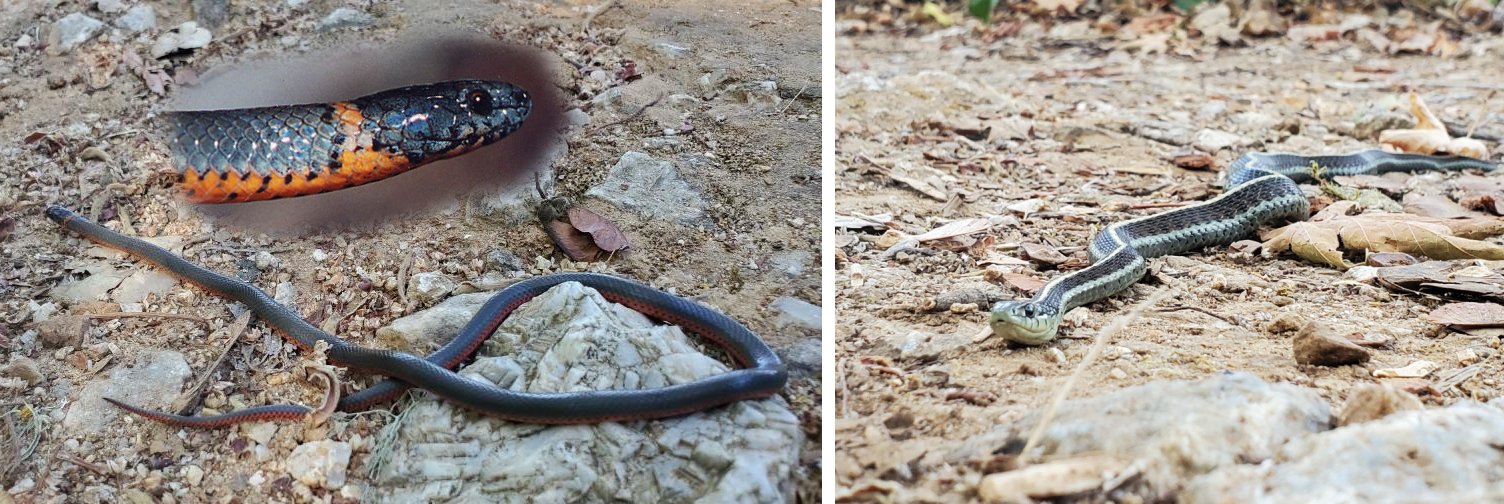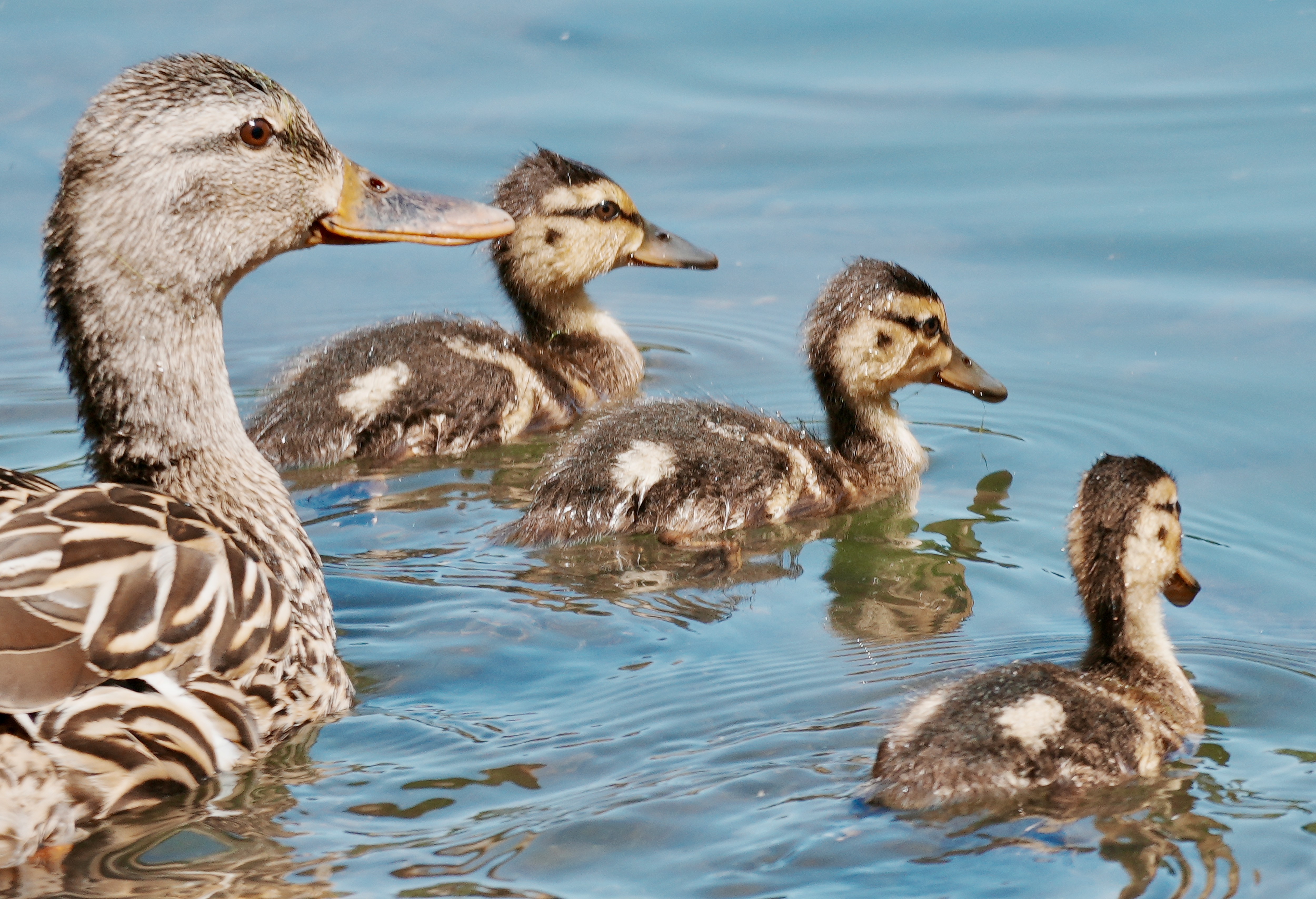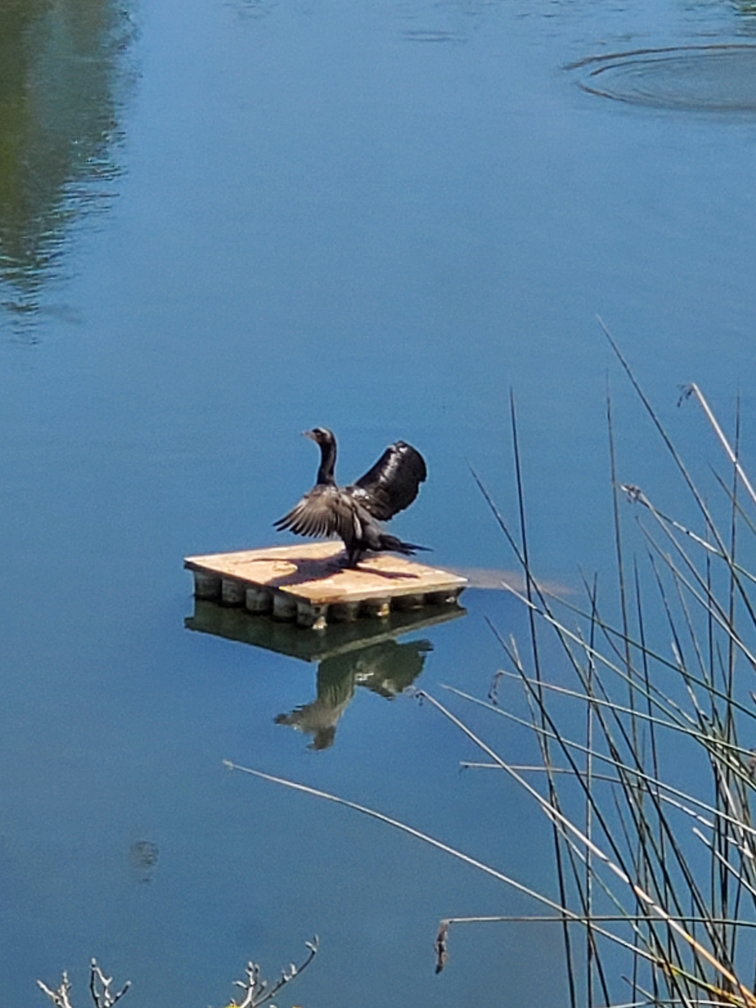Red-eared sliders do not belong in Kalkar Pond. They are a popular pet, and unfortunately, people who decide they can't care for them anymore (but don't know better) often release them in natural ponds. There they compete aggressively and often wipe out native turtles (Western Pond Turtles would be our native turtle).
These 2 hang out on the float (which more often is the hauling out spot for ducks, herons, and occasionally grebes). Turtle shells are bone, which can grow. But the plates on top (called scutes) don't grow. As a turtle grows, the scutes peel off - which is normal. This is probably the case for the turtle on the right. Its shell looks different mostly because it was sitting out drying for a while, whereas the turtle on the left just crawled out of the water when I took this shot.
This second image, also at Kalkar Pond, makes it clear why they are called "Red-eared".
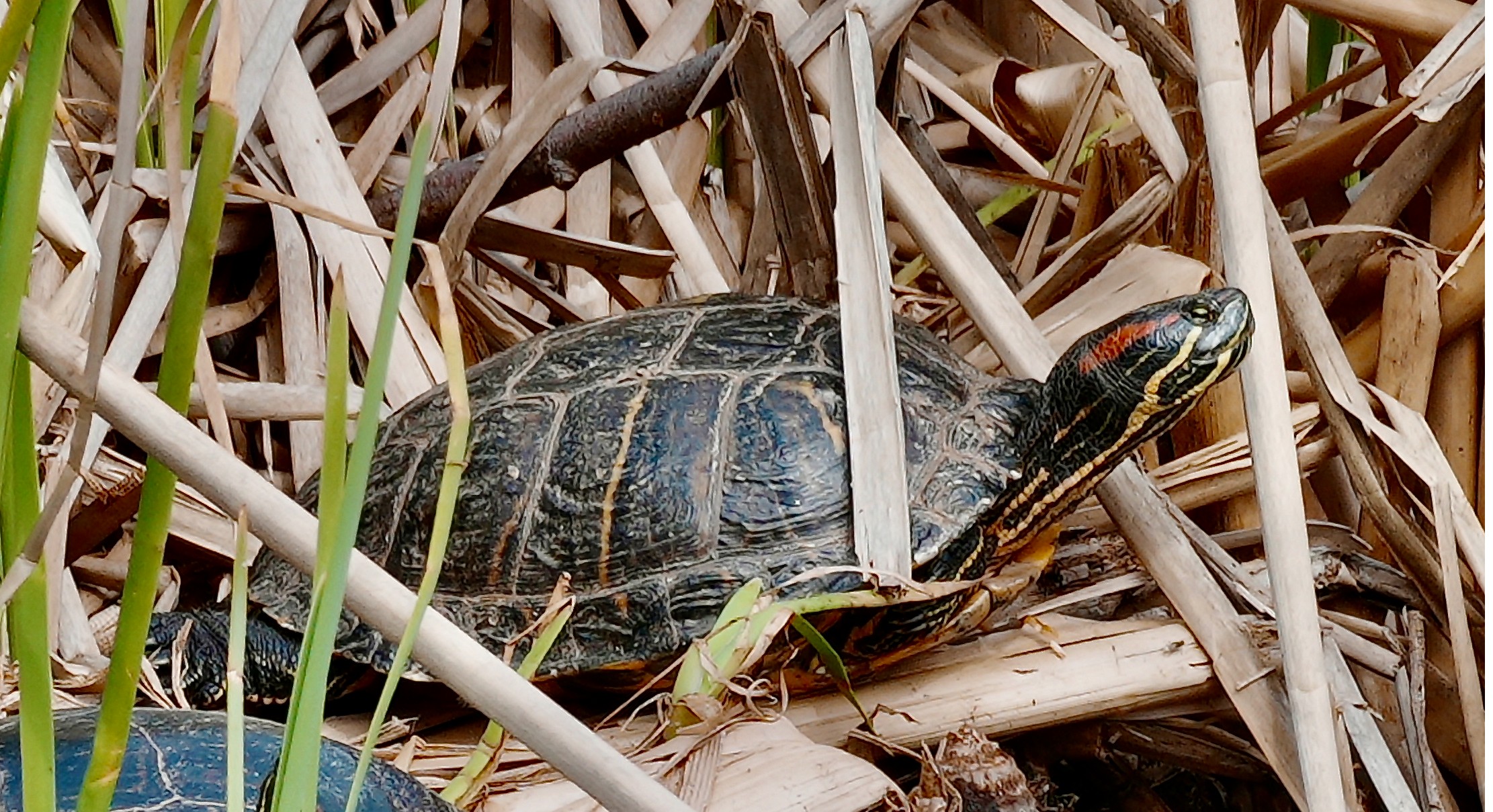
Photo of 2 turtles by Ron Goodman. Photo of 1 turtle by Grant Pogson.
